Applications
Preventing dust adhesion
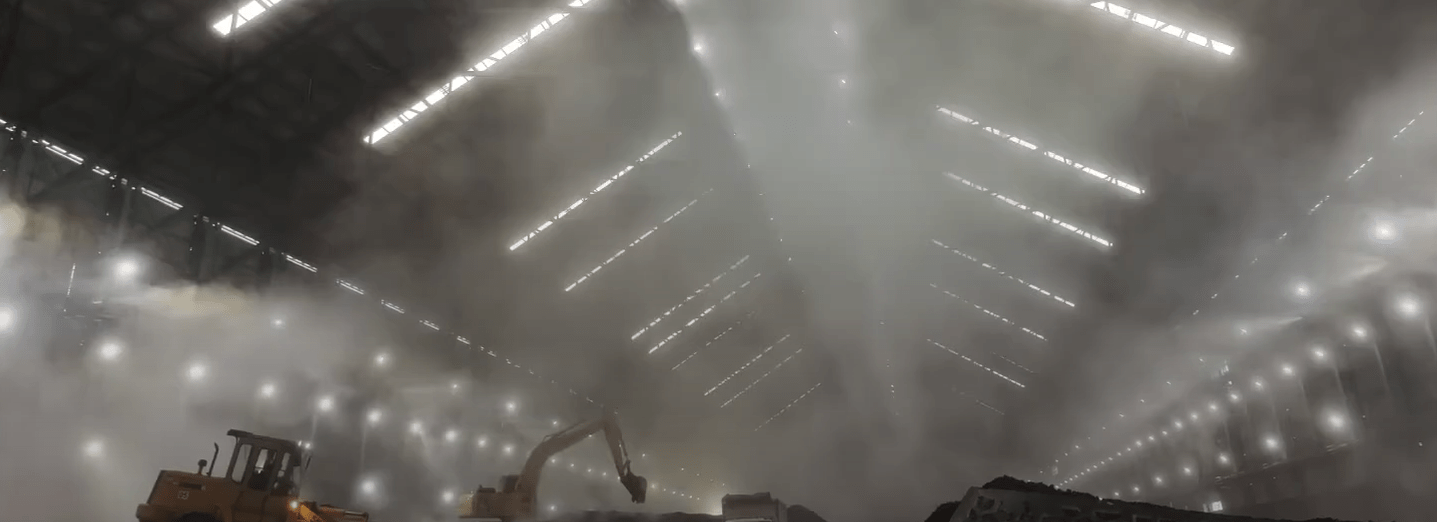
Overview
Dust adhesion in the industrial field can have a different composition depending on the environment of that industry. In some industries, environmental dust is mixed with particles of metals or chemicals due to the processes from those industries, such as: cutting, grinding, sawing, welding, plasma cutting, etc.
Depending on the dust compounds, dust is very harmful to the employees who inhale the airborne dust particles. It can cause serious health issues if left unsupervised. Moreover, it can be hazardous for the business operation, as it can damage the machines or the products.
Issues with dust when left unhandled
- Can trigger an explosion
- Can start a fire
- Can cause health issues
- Can lead to damaged machinery
What is dust adhesion
Dust adhesion is the process in which dust particles are attracted towards a certain surface due to physical forces such as “diffusion, mechanical interaction or electrostatic attraction”. Environmental dust and dust combined with other compounds create industrial issues. The gravity of these issues varies; however, they shouldn’t be neglected as they can worsen. Furthermore, these are the most common issues related to dust adhesion:
- Dust related defects
- Costs of repairs (time, manpower, and infrastructure)
- Decrease productivity
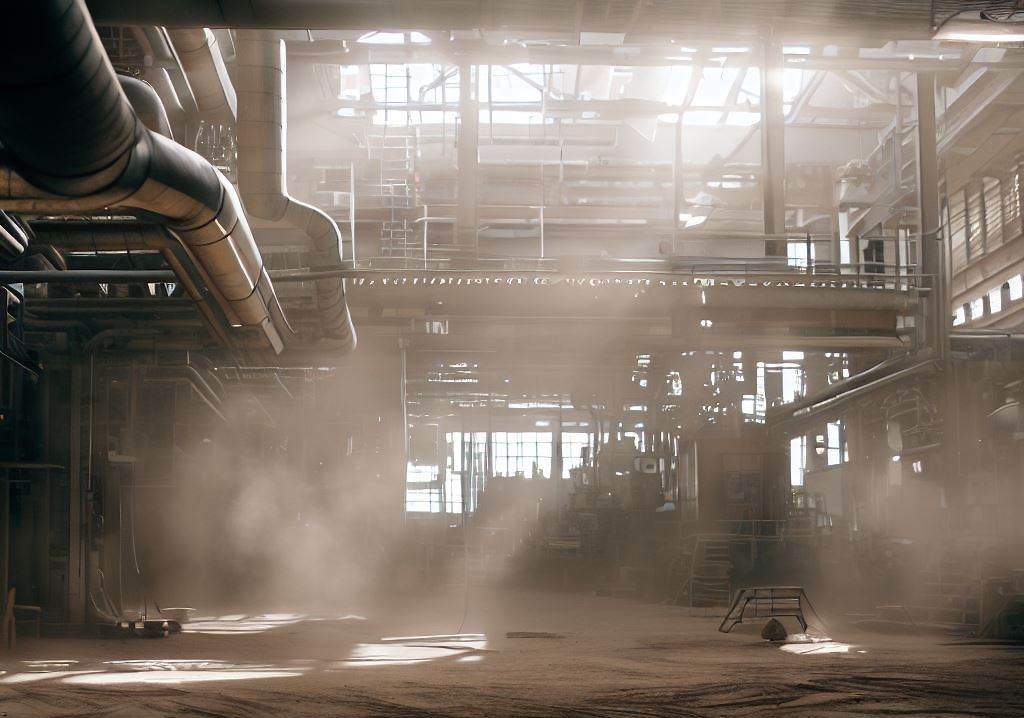
Humidification and Dust Suppression with our Fog-based systems
Preventing dust adhesion is a two-step process consisting of reducing the number of dust particles and neutralizing the remaining particles. Neutralization is achieved through humidification and dust suppression through spraying.
- Humidification: Dust sticks to an object due to its micro-structure, the viscosity or by an electrostatic charge. By controlling the relative humidity, the conductivity of the air is increased preventing dust from sticking to an object due to an electrostatic charge.
- Spraying: Airborne dust is impossible to avoid, even when using over-pressure. By spraying a non-wetting water droplet that is the same size as the dust particles, we can suppress the dust particles and avoid these particles from reaching specified objects.
Solutions
Dust solution for sensitive environments: AKIMist®
The AKIMist humidifier is a unique Japanese invention which offers full dust control and prevention. AKIMist is an adiabatic humidifier, which means that it increases humidity by adding cold water to the air. AKIMist is known for its non-wetting abilities as the droplet size is less than 7.5μm. This means that the droplets are so small that they will bounce back without bursting on any surface. At the same time, adiabatic humidifierFus are very energy-efficient and uses 80% less energy that conventional humidifiers.
Dust solution for sensitive environments: AKIMist®
- Full dust control and prevention
- Eliminates the risk of explosion and fire due to dust accumulation
- Non-wetting – suitable for environments with expensive precision equipment
- Energy-efficient and easy to install
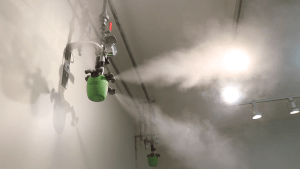
Dust control in a less sensitive environment
- BIM nozzles produce extremely fine droplets ranging from 10 to 100 μm
- Pneumatic spray
- Cost efficient solution
- Clog resistant
- BIM series
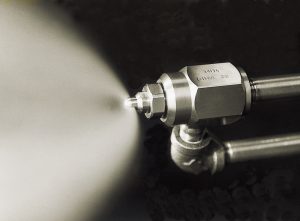
Dust control with hydraulic spray
- Fine fog between 45 – 210 μm
- Cost-efficient solution
- No compressed air needed
- High wear resistance due to ceramic tip
- KBN
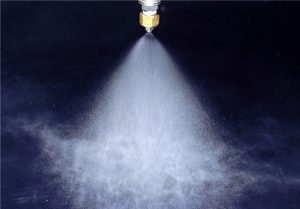
Preventing dust adhesion in specific industries
In certain industries, dust adhesion is developed faster as a consequence of the industrial field processes. For example, in environments such as garbage plants, iron/steel plants, recycling plants, cement plants, dust disperses and spreads faster, affecting both the wellbeing of the workers decelerating and affecting the efficiency of these working processes.
If you want to retrieve more information regarding the products that are offered as solutions for dust adhesion, entering on the product page can be the first step. There you can find technical data regarding these products as well as an individual product catalog that you can download. We made it easy and accessible for your experience. However, for any question or query, you can always contact our specialists and they can advise you and provide you with their know-how.
At IKEUCHI, we have determined the fundamentals to select the right nozzle for your application based on their characteristics. When selecting the nozzle, we advise you based on your required spray angle, spray capacity, optimum spray pattern, and spray distribution.
If you have technical question about nozzles, need advice to choose, or request a quote,
